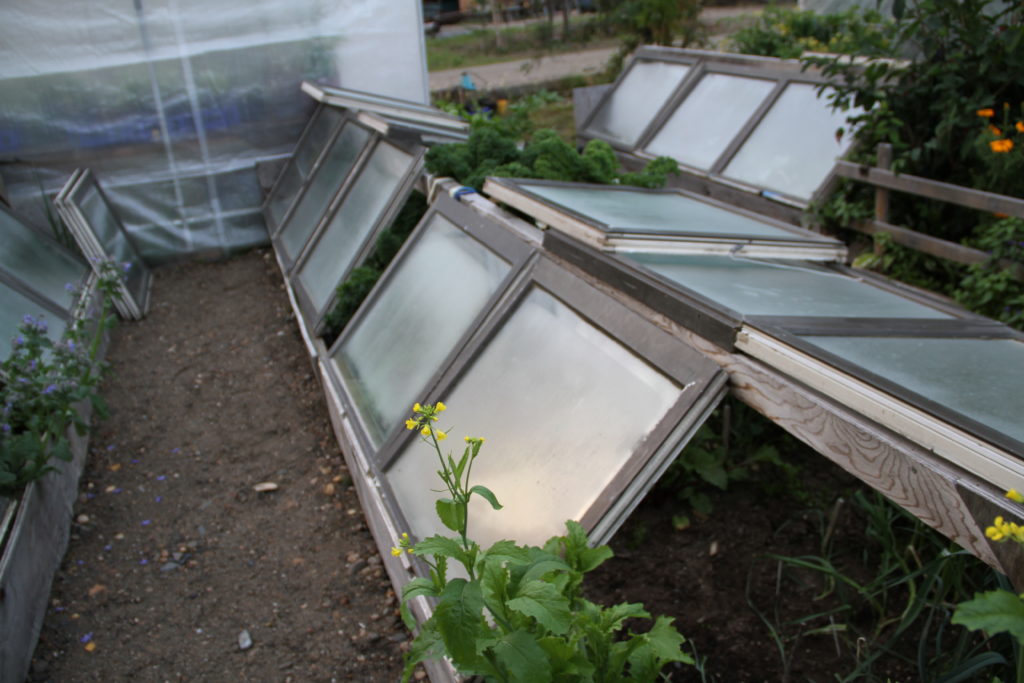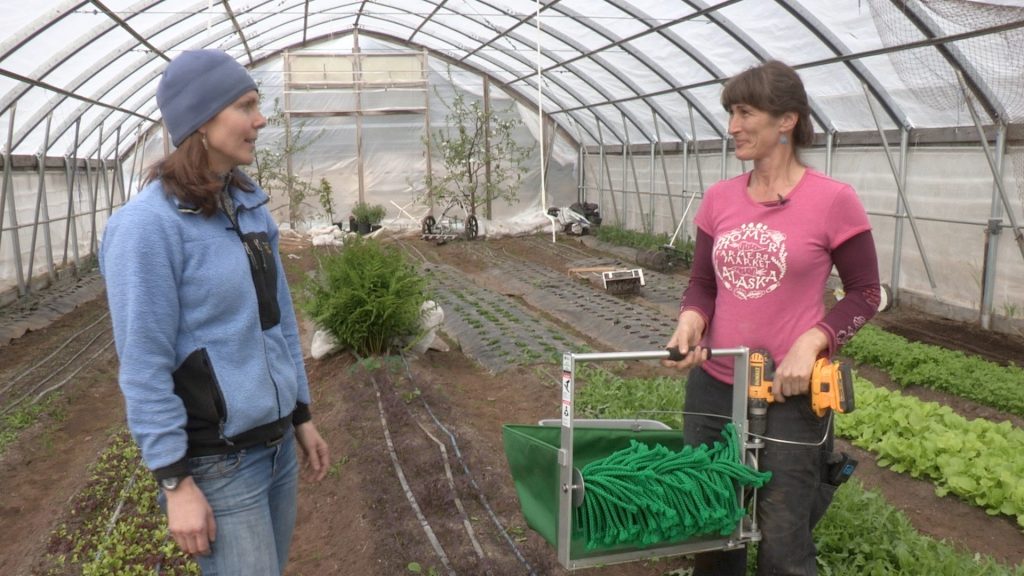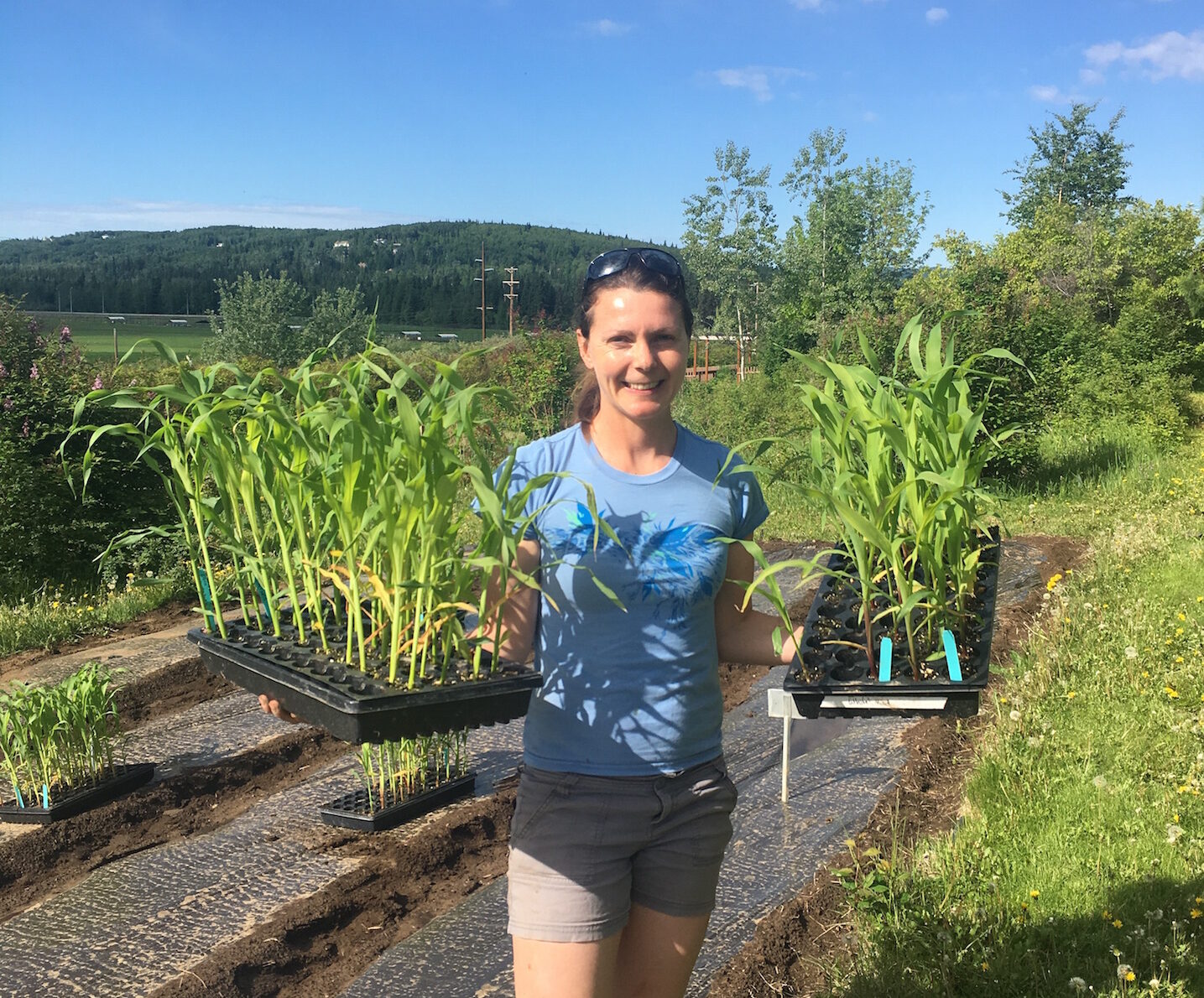Although the growing season in Alaska is short, particularly in some areas, it’s getting longer. Still, from year to year, there are noticeable differences in the length of the growing season. Season extension techniques help deal with some of this year to year variability and make the most of your season. You can protect your plants from frost and cold using a range of season extension techniques: frost cloth, low tunnels, cold frames or hoop houses.

Frost cloth can be used to create a low tunnel to help insulate plants from cool temperatures.
Frost cloth, or row cover, comes in a variety of weights – the heaviest can protect plants down to 24°F.
Low tunnels are constructed from metal hoops and can be covered with frost cloth or plastic.
Cold frames can be insulated and/or heated (hot bed). You can even make a rudimentary cold frame with straw bales. If you’re willing to add heat to a cold frame (known as a hot bed) or high tunnel, you can extend the growing season even further into the winter.

Old windows can be used to create a cold frame.
Hoop houses and high tunnels are another option. They provide a little less protection than cold frames because they are usually constructed from simple structures and use a plastic covering.
If you have extra room in your greenhouse, you can plant cold-hardy vegetables in mid- to late summer, but it might be hard to take precious space from your tomatoes and cucumbers when they are at their peak and give it to the lowly corn salad (mache). Continue reading

